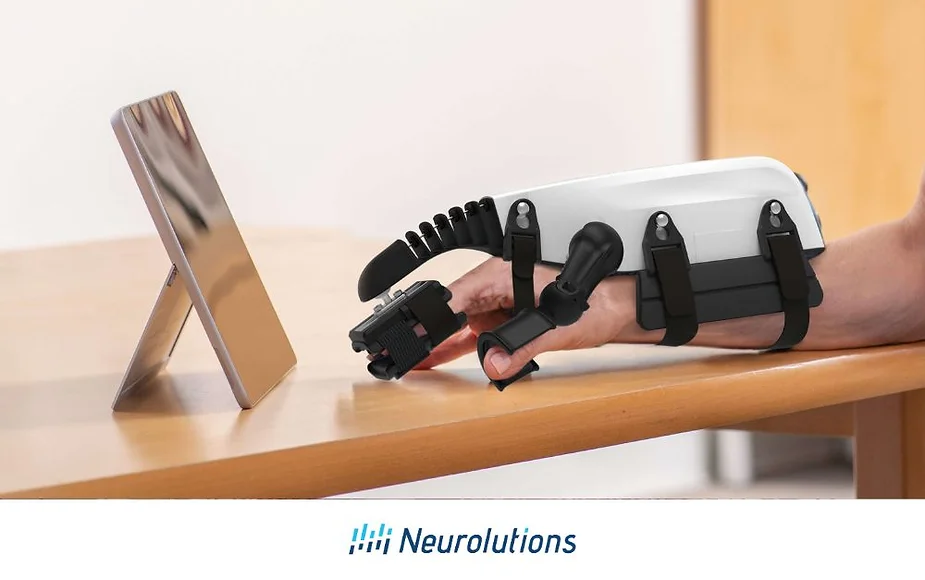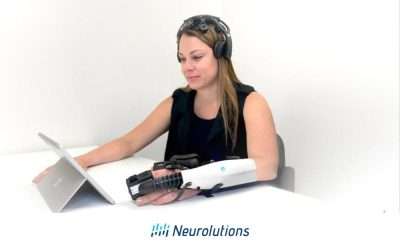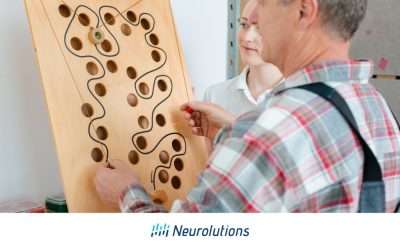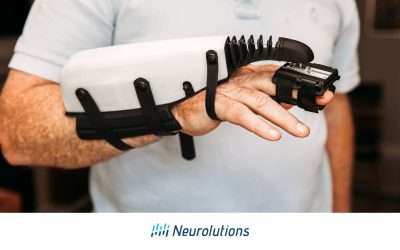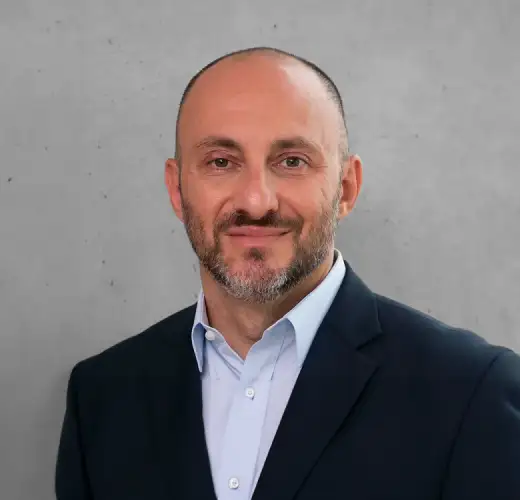Motor impairments that arise from a stroke may impact a stroke survivor’s functional mobility and use of the arm and hand. Problems such as weakness, tightness, and instability can have significant consequences on an individual’s quality of life, independence, and safety.
Although stroke survivors and their families heavily rely on treatment recommendations from health care professionals familiar with their unique presentation, many individuals seek additional information on stroke rehabilitation devices by searching the internet.
When “Googling” devices, therapy tools, and braces used to treat mobility impairments, stroke survivors often become overwhelmed with the multitude of treatment options. Two approaches used in stroke rehabilitation that involve purchase and many times skilled training include 1- orthotics and 2- therapeutic devices.
In general, orthotic devices can help create a stable base or to aid movement. On the other hand, therapeutic devices can be used to actively engage the individual in activities that promote neuroplastic recovery and potentially lend to functional improvement.
It is important to know the pros and cons between both approaches to ensure your time, money, and effort align with the goals of your rehabilitation. It is important you are selecting interventions that are known to be effective.
Orthotic devices and therapeutic devices serve different purposes in stroke rehabilitation, but they can complement each other to enhance the overall rehabilitation process. This overview will illustrate the differences between the two, and also introduces a therapeutic device, known as the IpsiHand System, that has promise to impact motor recovery after stroke.
Understanding Orthoses
The use of orthotics, especially when paired with a functioning hand or mobility, can be critical in early intervention of stroke rehabilitation.
Orthotics often fall into different categories, and can be broken down into further subcategories.
- Body region: Upper extremity, lower extremity, and sometimes trunk. There are some orthotics that encompass multiple body regions.
- Static versus dynamic: Static orthotics provide stability at the joint for support and are often rigid (i.e. body parts cannot move within the orthotic). As an example, they may be necessary when there is weakness or spasticity that negatively affects alignment and positioning of the limb. However, dynamic orthotics often have a hinge or have material that bend and permit movement at the joint. An example of a dynamic orthotic is one that allows for slow, gradual movement.
- Custom versus off-the shelf: Orthotics can be as simple as purchasing a shoe insert or a wrist brace from the drug store. However, they also may require intensive customization and measurement from the company specialists, orthotist professionals (i.e. expert with a degree in orthotics and prosthetics, or O&P), physiatrist (i.e. foot and ankle doctor), or rehabilitation therapy provider (i.e. occupational and/or physical therapist).
- Use-specific: Orthotics, supports, braces or braces may be needed to accomplish a specific activity in mind. There are some dynamic orthoses that open and close the hand to promote grasp and release during a functional reach task, while others may be used for walking purposes. It could be argued that certain use-specific orthotics are therapeutic in nature. This will be discussed later in the article.
Orthotics provide rehabilitative benefits including but not limited to stability and alignment of the joints, prevention of contractures, assistance with movement, sensory feedback/input, pain relief, compensation for the loss of sensation in the affected limb swelling management, increased safety during walking, or use of the hand.
Research surrounding stroke indicates the importance of early mobility and immediate integration of affected limbs for maximizing the chances of successful rehabilitation. Orthotics may facilitate early mobility and use of the affected limb. As noted earlier, orthotics may also reduce fall risk and reduce hospital readmission.
In stroke rehabilitation, orthotic devices can play a valuable role in supporting the affected limb, promoting alignment, and facilitating movement. By providing stability and assistance, orthotics may help individuals be more capable of performing daily activities when the orthotic is being worn. Working with an orthotist can ensure that the orthotic device is customized to their individual needs and contributes to their overall recovery and rehabilitation process.
As much as there are benefits to orthotics, there are also limitations as well. In general, some known limitations of orthotics include:
- Not known for providing brain stimulation: While certain static orthotics can be important for safety or to support a joint, orthotics are unlikely to promote brain recovery needed to either heal old pathways damaged from a stroke, or form new pathways.
- May cause dependency: Some individuals become overly reliant on the orthotic. This can secondarily cause loss of strength in the muscle groups that the orthotic supports. If you think this is happening, talk to your healthcare team about it so you can determine if there are other options available to ensure you are safe and functional, but continue to develop strength, stamina, and coordination if the realistic goal is to discontinue orthotic use.
- May be necessary to wear/use all the time: For safety and proper functionality, some orthotics must stay on during mobility or during functional tasks as you improve strength and use of the affected limb.
- May limit joint range of motion: Orthotic devices often limit the range of motion or natural movement of a joint or limb in an effort to offer stability. This can be counterproductive, especially if the goal is to improve mobility or function of a limb.
- May cause discomfort: Some external orthosis, even when fit properly, can be uncomfortable and hot, causing skin irritation, skin breakdown, or painful pressure points. This may not only discourage wear, but it also can lend to serious issues that require medical attention (i.e. open sores).
- May be costly: Off-the-shelf can range from a few dollars to hundreds of dollars, but custom orthotics can cost up to thousands of dollars. Not all orthotics are covered by insurance.
- May lack of evidence: It is important to understand that some orthotics are backed by evidence supporting the application in stroke rehabilitation and safety (i.e. use of ankle-foot orthotic (AFO) in the case of foot drop after a stroke to prevent falls), while others do not have clinical validation or evidence. In general, either choose an orthotic that is known to have a high level of evidence to support use, or use it only if you are certain you are gaining benefit and it supports your goal.
- Buyer beware: If you do not seek professional guidance and choose to try an off-the shelf or non-prescription orthotic device, it is at your own risk. In other words, it is possible that what you are buying and using is not appropriate for you and could cause more harm than good. There is more reassurance in selecting an orthotic in which a prescription is needed. Prescriptions imply that a medical provider is overseeing use and your plan of care when you are using the orthotic. Sometimes it is prescribed based on medical necessity.
- Orthotics are an adjunctive intervention: More interventions are necessary for promoting motor recovery than use of an orthotic device. Strengthening exercises, aerobic/endurance training, coordination activities, and brain activities are often needed to return to a prior level of muscle strength and capacity.
It is advisable to consult with a medical professional prior to the use of orthotics if you are recovering from a stroke so you can understand if it is right for your unique situation.
Understanding Therapeutic Devices
The use of therapeutic devices also play a crucial role in aiding recovery and improving functional abilities, yet it is very different in mechanics of action from an orthotic.
The term “therapeutic device” broadly refers to any device or equipment designed to be used for medical or therapeutic purposes to aid in the prevention, diagnosis, monitoring, treatment or alleviation of a medical condition or disability.
Examples of therapeutic devices commonly used in stroke rehabilitation include brain-computer interface technology (like the IpsiHand System), wearable robotics, functional electrical stimulation devices, robotics that provide exercise, virtual reality systems, devices that assist movement, and smart wearable sensors (i.e. sensors embedded into a garment that track data and may allow for patient monitoring).
Not all of the devices intended for motor recovery after stroke mentioned above have been through rigorous clinical trials and received FDA-clearance. For therapeutic devices that have, a significant advantage of clinically-proven therapeutic devices is that they are designed to promote recovery and new neural pathway facilitation after stroke. Many people that have had a stroke have experienced reduction or depletion of neural connection formation in critical areas related to motor planning and motor execution. This is due to the fact that parts of the brain that had the stroke are no longer being used as much as they were before the stroke if at all. Why does new brain formation matter? Research has shown that for robust, lasting changes to be made, it is best for the individual to be engaged with the activity.
Without the means to promote recovery in the brain and be engaged in activities, stroke survivors often plateau or decline in function. Therapeutic devices that have gone through extensive research have the possibility of making permanent changes in the brain that benefit motor recovery when used properly. New formations made within the brain in the right locations can be a gateway for “being a match that sparks a fire.”
As much as there are benefits, there are also limitations to exclusive use of therapeutic devices. In general, some known limitations of therapeutic devices include:
- Comprehensive therapy interventions are still imperative: While some therapeutic interventions have been shown to optimize recovery potential, many individuals after a stroke will still require additional interventions to support motor recovery. These interventions may include training to use the arm and hand in daily activities or management of secondary issues related to muscle atrophy and stiffness after stroke (i.e. strengthening and stretching interventions).
- Cost: The retail price of technology can be pricey due to extensive research and development and infrastructure needed to support device operation.
- Many therapeutic devices require a prescription: While the same could be said about custom orthotics, potential users should know that a medical prescription is often needed prior to use, especially if it is going to be utilized outside of therapy within a facility. Conversely, in order for it to be ordered by your doctor, your doctor will endorse that the risks have been considered and are outweighed by the benefits of what the device could offer.
- Recovery is not always predictable: There are countless factors that play into “success rate” and the recovery trajectory. Some of the factors include other medical comorbidities, level of awareness, how much training an individual has had with the device to use it properly, etc.
Furthermore, because the brain is not “repairable” like a broken part on a car. There is variability of where the specific neural connections will form, how long it will last, and how strong and fast the signals are to properly relay necessary messages.
If you are considering a device, be sure to disclose all pieces of information to those you are consulting with so an informed decision can be made prior to use. In turn, representatives of device companies should also do a comprehensive analysis prior to selling and/or offering training.
Like orthotics, it is important to weigh out the purpose of the device and consider the pros and cons prior to starting any therapeutic device to assist with your stroke rehabilitation.
Introducing IpsiHand Upper Extremity Rehabilitation System as a New Approach to Traditional Orthosis:
Brain-computer interfaces (BCI) represent one of the latest technological innovations in therapeutic devices for stroke rehabilitation. The Neurolutions IpsiHand is the first and only FDA-cleared BCI that is designed to be a therapeutic device for making positive changes in the brain on the motor networking system. The IpsiHand System has been clinically validated to improve motor recovery after chronic stroke in adults. Clinical trial participants commonly received feedback that they had met the limit regarding the progress they could make, having unsuccessfully tried a number of orthopedic products and therapeutic devices without measurable progress or change in function.
The IpsiHand System allows for pairing of a noninvasive EEG headset and a handpiece, the newest generation of orthotics, allowing the user to guide the use of the orthotics handpiece with their thoughts only.
The IpsiHand System offers several advantages compared to other upper extremity orthotics intended for stroke recovery. These advantages include:
Non-Invasive Brain Computer Interface: As said earlier, the IpsiHand System is the first and only FDA cleared device that uses non-invasive brain-computer interface technology. As a therapeutic device, it relies on the user’s own intentions, enhancing neuroplasticity, user autonomy, and self-initiated carryover to real-life tasks. Many other technologies may require invasive procedures or rely on external machines or people to perform rehabilitation exercises.
Additionally, it does not require surgery or invasive procedures. Therefore, the non-invasive approach enhances accessibility, ease of use, and mitigates risks and complications often tied into surgical interventions.
Clinically Proven, Lasting Gains***: Research shows that over two-thirds of participants in the chronic stroke population experienced significant gains within three months of using the IpsiHand System. The functional gains achieved with this system are durable and maintained even after therapy completion, depending on severity of initial impairment, which is unique compared to other technologies where gains may not last nor carry over to real-world functionality.
Home Use Capability: The IpsiHand System can be used independently in the home without requiring ongoing clinician services for training or rehabilitation. This can provide convenience for users, as some technologies may require continuous clinical support. It should be noted that the expert clinical team provides guidance for successful system use throughout the recovery process.
No Requirement for Motor Function:
The IpsiHand System doesn’t necessitate voluntary movement for qualification and is indicated for the chronic population. It may be suitable for individuals with various levels of motor ability because the desired outcome is the formation of neural pathways for the restoration of motor control. This makes it potentially more inclusive compared to technologies that rely on the user’s existing motor function.
***¹QRS-008: Contralesional Brain-Computer Interface Control of a Powered Exoskeleton for Motor Recovery in Chronic Stroke Survivors. Stoke, 2017
²QRS-0012: Theta-gamma coupling as a cortical biomarker of brain-computer interface-medicated motor recovery in chronic stroke. Brain Communications, 2022
³QRS-0013: Motor Network Reorganization Induced in Chronic Stroke Patients with the Use of Contralesional-Controlled Brain Computer Interface. Brain-Computer Interfaces, 2022
Which is better? Orthotics or Therapeutic Devices?
The short answer is, neither is “better,” but use and application depends on the goal. Both approaches have an important place in stroke rehabilitation at different stages in recovery.
If you or your loved one have suffered a stroke, your specific needs and individual goals of your rehabilitation program will determine the appropriate use of these both approaches devices.
In summary, the key distinctions are as follows:
- Passive vs. Active: Orthotic devices are generally passive and provide external support or correction, while therapeutic devices are active tools used in exercises and activities to engage the patient in active rehabilitation.
- Focus: Orthotic devices most often focus on providing structural support or correction, whereas therapeutic devices focus on promoting new connections in the brain, active movement, muscle strengthening, and functional recovery.
- Application: Orthotic devices are worn on the body to provide support, alignment, and sometimes aid in function, while therapeutic devices are used during rehabilitation sessions for motor priming or to facilitate recovery.
It is important to consider these differences, advantages, and disadvantages, when considering what therapy approaches to apply for rehabilitation and recovery after stroke.

